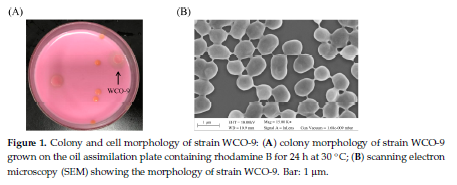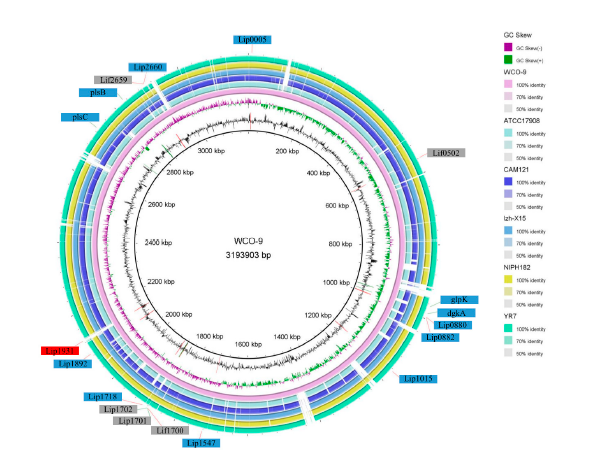Abstract:
Waste oil pollution and the treatment of oily waste present a challenge, and the exploitation of microbial resources is a safe and efficient method to resolve these problems. Lipase-producing microorganisms can directly degrade waste oil and promote the degradation of oily waste and, therefore, have very significant research and application value. The isolation of efficient oil-degrading strains is of great practical significance in research into microbial remediation in oil-contaminated environments and for the enrichment of the microbial lipase resource library. In this study, Acinetobacter junii WCO-9, an efficient oil-degrading bacterium, was isolated from an oil-contaminated soil using olive oil as the sole carbon source, and its enzyme activity of _-nitrophenyl decanoate (_-NPD) decomposition was 3000 U/L. The WCO-9 strain could degrade a variety of edible oils, and its degradation
capability was significantly better than that of the control strain, A junii ATCC 17908. Comparative pan-genome and lipid degradation pathway analyses indicated that A. junii isolated from the same environment shared a similar set of core genes and that the species accumulated more specific genes that facilitated resistance to environmental stresses under different environmental conditions. WCO-9 has accumulated a complete set of oil metabolism genes under a long-term oil-contamination environment, and the compact arrangement of abundant lipase and lipase chaperones has further strengthened the ability of the strain to survive in such environments. This is the main reason why WCO-9 is able to degrade oil significantly more effectively than ATCC 17908. In addition, WCO-9
possesses a specific lipase that is not found in homologous strains. In summary, A. junii WCO-9, with a complete triglyceride degradation pathway and the specific lipase gene, has great potential in environmental remediation and lipase for industry.
Key Words:
Acinetobacter junii WCO-9; lipase; oil degradation capabilities; pan-genome analysis;
triglyceride degradation pathway




